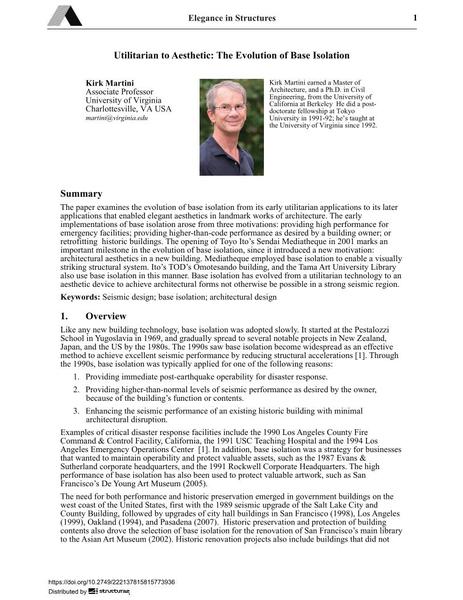Utilitarian to Aesthetic: The Evolution of Base Isolation

|
|
|||||||||||
Détails bibliographiques
| Auteur(s): |
Kirk Martini
|
||||
|---|---|---|---|---|---|
| Médium: | papier de conférence | ||||
| Langue(s): | anglais | ||||
| Conférence: | IABSE Conference: Elegance in structures, Nara, Japan, 13-15 May 2015 | ||||
| Publié dans: | IABSE Conference Nara 2015 | ||||
|
|||||
| Page(s): | 58-59 | ||||
| Nombre total de pages (du PDF): | 7 | ||||
| Année: | 2015 | ||||
| DOI: | 10.2749/222137815815773936 | ||||
| Abstrait: |
The paper examines the evolution of base isolation from its early utilitarian applications to its later applications that enabled elegant aesthetics in landmark works of architecture. The early implementations of base isolation arose from three motivations: providing high performance for emergency facilities; providing higher-than-code performance as desired by a building owner; or retrofitting historic buildings. The opening of Toyo Tto's Sendai Mediatheque in 2001 marks an important milestone in the evolution of base isolation, since it introduced a new motivation: architectural aesthetics in a new building. Mediatheque employed base isolation to enable a visually striking structural system. Tto's TOD's Omotesando building, and the Tama Art University Library also use base isolation in this manner. Base isolation has evolved from a utilitarian technology to an aesthetic device to achieve architectural forms not otherwise be possible in a strong seismic region. |
||||
| Mots-clé: |
conception sismique
|
||||
